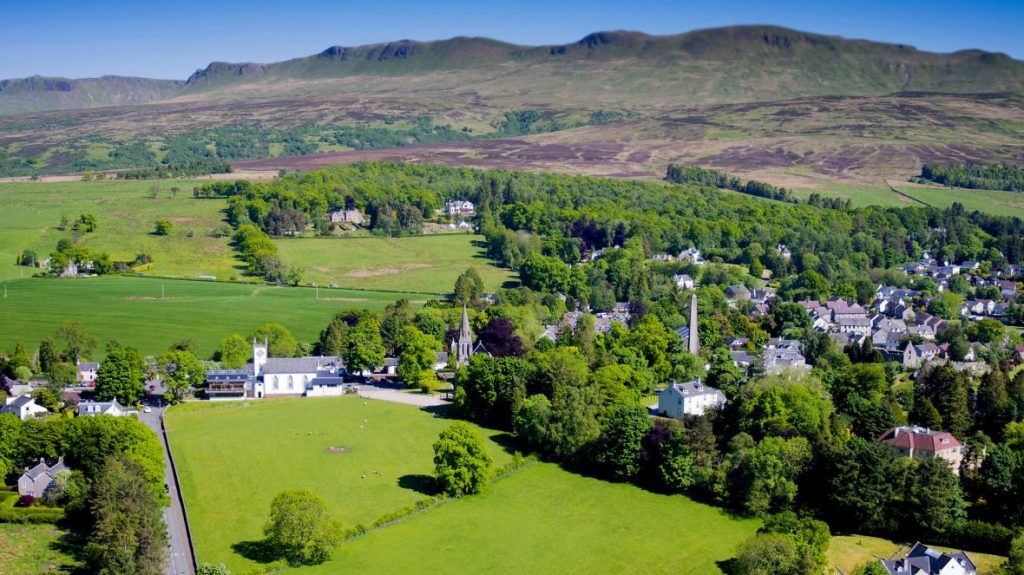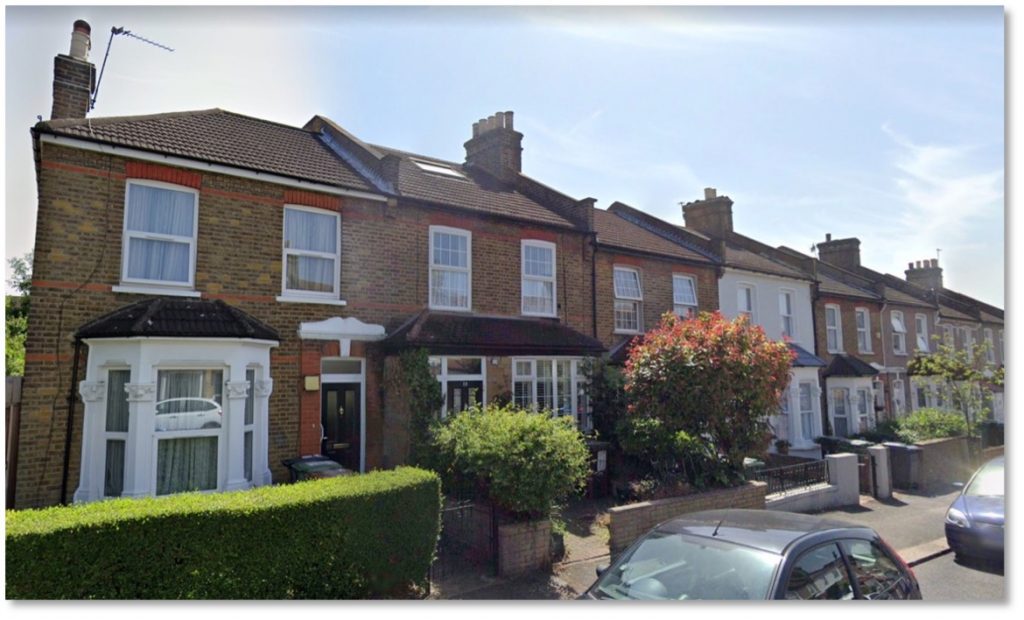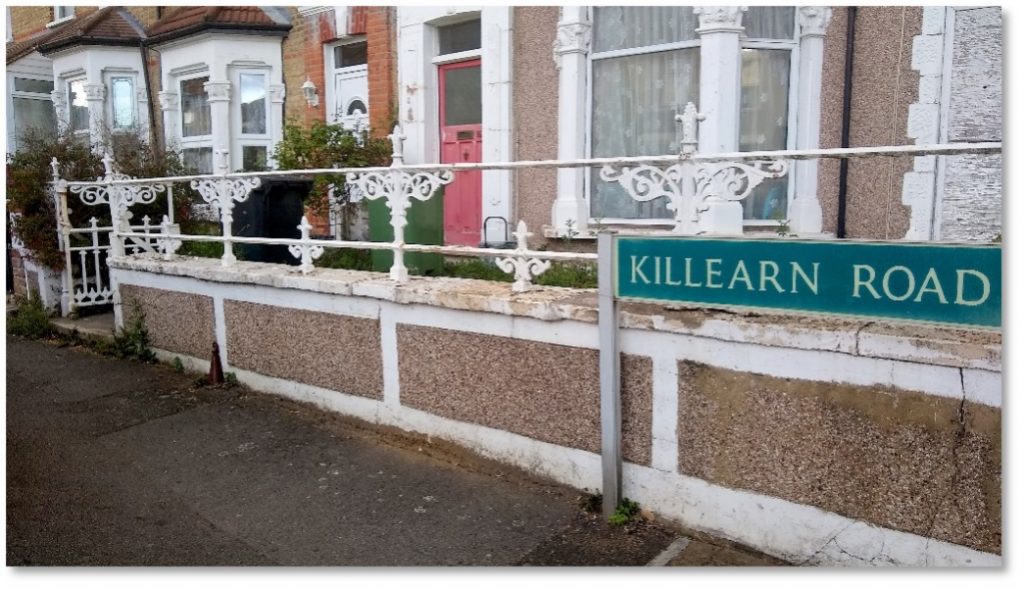“Railings for Africa?”
Background
As with many other roads in the estate, Killearn is named after the village of the same name, which is located about 15 miles north of Glasgow and 7 miles east of Loch Lomond. It’s clearly another road name influenced by Archibald Corbett’s love of his home country. The village is situated south of the A 811 Road in the council area of Stirling.

Killearn village in Scotland
Killearn is a medium length road in the Corbett Estate and runs down the hill between Torridon Road to the east and Muirkirk Road to the west.
Building commenced in 1901, and when it was finished there were 164 houses. The 1911 census recorded 766 people residing in the road. That equates to 4.67 people per house on average – slightly higher than average for the whole Estate.

Three-bedroom houses at the bottom of Killearn Road on the Corbett Estate
The Early Residents: details from the 1911 Census
The male to female ratio was quite similar, with 50.78% of the residents being women and girls, and 49.22% men or boys. This was unusual as the Estate average was 53% female and 47% male.
The top two adult female first names here were Annie and Mary, with the male equivalents being William and John. This is similar to other roads since Mary and William were by far the most popular male and female adult names in the estate. For children, it was Doris, Ethel and Lily (held jointly with 8 each) and William in Killearn.
As with almost every other street, the most popular kind of work for the citizens of Killearn Road was as a Clerk. Of the 299 people in employment, 28 said that they did some sort of office job (Clerk). Amongst the non-office workers, there was a ‘Lozenge Maker’, 44-year-old William Anderson (he made sweets) at No. 42; and George Bastable, a ‘Tortoise Shell Worker’ at No. 159.
The street record for the highest number of children in a family went jointly to the Tutt family at No. 137 and the Shepherd family at No. 152. Each family had eight children. This means there were at least 10 people living in those two houses, which were amongst the smallest on the Estate, with three bedrooms and a downstairs bathroom.
Thomas & Herbert Stevens at No. 107 were originally from Ontario, Canada. They both take the road’s prize for ‘resident from furthest away’. Overall, the vast majority of the street’s residents (70%) had been born in London (a little lower than the Estate average of 72%).
The oldest resident at the time of the 1911 census was Philip Greet who lived at No. 160. He was 80 years old.
Any Old Iron?
A pretty original feature of many houses in the estate were the iron railings and gates that adorned the front aspect. Sadly they no longer exist, because they were removed by the government during the second world war to be melted down and used to construct armaments or munitions.
All are long gone – all except for those belonging to one house at the top end of Killearn Road, that somehow retains this feature. We don’t know why these ones stayed in place, but they give us an opportunity to imagine what row upon row of houses would have looked like when they were first built. Maybe they were removed by the owner, stored away and then restored after the war?

The last remaining iron gate and railings in the whole Estate are on Killearn Road
The removal of iron railings and other metal for the war effort has been the subject of controversy for many years. Some people believe the government (in the shape of Lord Beaverbrook) took more scrap iron than it actually needed, and that many thousands of tons were never used. They believe that much of the iron was later either buried in landfill or at sea.
Whatever happened though, taking the iron was seen as a good way of bringing the community together, and people genuinely believed they were contributing to the war effort. How the Corbett iron was used will almost certainly never be known, but maybe we should like to think ours was not removed unnecessarily.
One final theory was that much of the iron was used as ballast in ships sent to Africa, which is why there were (unverified) historical reports of houses in West Africa being surrounded by Victorian decorative railings.